9 Ways to Avoid Keyword Stuffing in Your Content
If you’re planning to learn SEO, keyword stuffing is a subject you shouldn’t neglect.
We’ve seen countless newbie SEOs practising keyword stuffing intentionally as well as by accident. Eventually, their sites get penalised and they have to start over by conducting an in-depth SEO audit.
If you’re new in the SEO or eCommerce industry and want to learn how to avoid keyword stuffing in your content, you’ve come to the right place.
In this post, we’ll explore keyword stuffing in detail, including what it is, its dangers, and different ways to avoid it altogether.
Ready to learn? Let’s get started then.
What is Keyword Stuffing in SEO?
Keywords are undoubtedly one of the most powerful elements in SEO.
But stuffing keywords unnaturally to manipulate Google’s SERP is a black hat SEO tactic. And Google penalises websites practising any form of black hat SEO tactics in their content.
For the uninitiated, keyword stuffing is a practice of including keywords that do not read naturally or are simply irrelevant to the topic.
There are mainly two keyword stuffing types:
1. Invisible Keyword Stuffing
For example, if a travel bag brand uses the “best travel bag” keyword too much in its content without being aware, it can be considered as unintentional visible keyword stuffing.
On the other hand, if this brand adds the same keyword in every sentence as well as at the end of the content unnaturally, then it is considered as intentional visible keyword stuffing.
Many SEOs try to stuff keywords in less obvious places such as footers or create irrelevant keyword-stuffed lists.
2. Invisible Keyword Stuffing
Invisible keyword stuffing is mostly done intentionally.
Over the years, SEO professionals have come up with several creative ways to stuff keywords where they would not be seen by website visitors.
Here are the most popular invisible keyword stuffing tactics that are leveraged by SEOs across the globe:
- Inserting keyword-loaded text in the web page’s code
- Stuffing keywords in meta, image alt tags, and comments unnaturally
- Hiding stuffed keywords by making the font colour the same as the webpage’s background colour
But, most SEOs no longer leverage such tactics because Google’s algorithm can now easily spot such instances.
That said, let’s talk about the dangers of stuffing your content with keywords.
What Are the Dangers of Keyword Stuffing?
In the early days, keyword stuffing was extremely popular in the SEO industry.
It helped SEO professionals to manipulate Google & other search engines and get their websites ranked higher in SERPs.
However, Google’s algorithm has evolved a lot over the last decade. Today, Googlebot can easily determine if you’re stuffing keywords on your website.
And if they find that your website is using any form of keyword stuffing, they’ll immediately demote your website. Sometimes, they’ll even remove your website from its index and issue a penalty.
Google Algorithm Updates That Target Keyword Stuffing
Google releases new updates to its algorithm all the time.
However, the big updates are specifically focused towards bridging certain gaps in an attempt to level the playing field for everyone.
Following Google algorithm updates were released specifically to target keyword stuffing:
- Panda Update — 24th February 2011
- Started assigning a quality score to individual web pages for ranking & authority
- Started scouting for user-generated spam, thin content, and keyword stuffing
- New additional updates have been added to this algorithm for penalties & fixes faster
- Hummingbird Update — 26th September 2013
- Started showing results based on search intent
- Started identifying and showing results with non-exact keywords (LSI keywords)
- Helped Panda update find & penalise websites stuffing keywords
- Bert Update — 25nd October 2019
- Started demoting poorly written content—especially keyword stuffed content
- Started rewarding websites with helpful content
If your website gets penalised by any of these algorithm updates, recovering from Google penalty & getting back your rankings will be a long and hard slog.
Therefore, it’s best to learn how to avoid keyword stuffing in your content.
9 Ways to Avoid Keyword Stuffing in Your Content
If you’re new to SEO, you must learn how to avoid keyword stuffing in your content.
The good news is, there are many different ways to avoid stuffing keywords unintentionally in your content.
Below are some ways to avoid keyword stuffing in your content unintentionally or otherwise.
Write for readers first
The best way to avoid keyword stuffing in your content is to write content for real people. In other words, write naturally and organically, using a conversational tone.
In addition, create the highest quality content possible and make sure that it is helpful to your readers and fulfils their search intent.
When you focus on creating the quality content, your primary target keywords will eventually wind up flowing naturally in your content.
Once you’re done writing your content, go back and check your keyword usage. And if you can naturally add more of your researched keywords, do it keeping the keyword density in mind.
Do effective keyword research
Finding the right keywords to target in your content without stuffing them unintentionally is the best way to avoid keyword stuffing.
There are plenty of keyword research tools you can use to discover high-potential keywords to include in your content.
These tools can help you fetch a list of related keywords based on your primary keyword. And by doing this, you’ll be able to target variations of your primary focus keyword in your content and minimise the need to repeat the same keyword too many times.
This, in turn, will allow you to target multiple keywords throughout your content while keeping a low keyword density and executing proper keyword optimisation.
Utilise keyword variations
Related keywords are naturally related to the main topic of your content.
By including related keywords, you can let Google and other search engines know that you’re using keywords that are naturally & semantically related to your content’s topic.
Doing this will help to avoid keyword stuffing while still giving search engine crawlers a clue about what your content is mainly about.
Write reasonably long content
This is a pretty basic piece of advice. But if you want to avoid keyword stuffing, consider increasing the length of your content.
The recommended content length to land in the first position in Google SERPs is increasing steadily.
While there isn’t exactly an ideal length for content. But it is believed that the longer the content, the better chances of ranking in top positions in Google SERPs.
If you’re still curious, here are a couple of the latest SEO statistics on content length:
- The average length of blog post content is getting longer and is now over 1,400 words. (Source: OrbitMedia)
- Longer content (2,000+ words) tends to rank higher and appear in the top 10 Google search results. (Source: CapsicumMediaworks)
- The average content length of the top 10 Google search results is 2,200 words. (Source: seo.co)
Besides, writing long content has several benefits if you really think about it.
For starters, it’s a smart way to minimise keyword stuffing issues.
More importantly, when you write long and in-depth content, you’ll have more opportunities to spread out your keywords and use variations of your primary focus keyword.
Focus on the content quality
If you’re going to increase the length of your content, be sure to keep your content quality intact.
Google & other search engines put great emphasis on content quality to determine rankings. And while including your primary focus keyword in your content definitely helps. But they’re only effective if your content quality is top-notch.
So when writing content for your website, be sure to prioritise content quality as much as your target keywords.
The best way to do so is by putting yourself in the readers’ position when you start the content creation process. And once you’re done writing your content, review it keeping your readers in mind and ask yourself whether you gained anything from it.
Internet readers have a small attention span and they’re not going to read your content if they don’t find it interesting and helpful.
So, write for your readers first and try to meet their search intent. And once you’re in the flow, the keywords can be added naturally later during the editing stage.
Find long-tail keywords to use
If you’re planning to use long-tail keywords, you’re getting on the right track. Adding long-tail keywords is another great way to resolve the keyword stuffing issue.
For the uninitiated, long-tail keywords are keywords that are longer and more specifically related to your primary focus keyword.
For example, if your primary keyword is “Nike red shoes”, then your long tail keyword could be “buy Nike red shoe size 10”.
As you can see, long-tail keywords tend to attract searchers who have very specific queries.
The goal is to find long-tail keywords with low competition and high search volume and include them in your content.
Alternatively, you can also discover long-tail keywords with low competition & high search volume by performing competitor analysis. In the end, it will help to minimise keyword stuffing since long tail keywords are less likely to be repeated excessively in content.
Insert primary keyword naturally
If your primary keyword is likely to be overused in your content unintentionally, either add it only in the most natural sentences or simply use variations.
For example, if your primary keyword is “SEO agency”, it is likely to be used too much.
In this case, try adding more specific keyword variations based on industry such as Plumber SEO services, location-specific keywords such as Sydney SEO agency, or go platform specific such as WordPress SEO Services.
This is a great way to avoid keyword stuffing, and at the same time, localise your content.
Include keywords in the right page elements
Apart from your content, you should also consider including your primary focus keywords in the on-page SEO elements.
These elements include your meta title, description, URL, image alt text, and subheadings.
Although, meta description has chances of keyword stuffing, so limit yourself to use your primary focus keyword only once.
Keep keyword density in check
Another approach you can take to avoid keyword stuffing in your content is by keeping the keyword density in check.
For the uninitiated, keyword density is the percentage of times a particular keyword is included in the content.
Here’s the formula to calculate keyword density:
Keyword Density = (number of words in your content) / (Number of times a particular keyword is mentioned in your content).
For example, if a keyword is used 5 times in 50-word content, the keyword density would be 10%.
While there is no exact number for proper keyword density, it is a best practice to keep keyword density under 2% to avoid keyword stuffing.
Based on this, the keyword density is considerably higher than the standard threshold in our above example.
Conclusion
If you’re serious about avoiding keyword stuffing in your content, it’s best to conduct thorough keyword research and learn various keyword optimisation techniques.
Simultaneously, focus on creating the best content possible with the goal to help your readers and satisfy their search intent.That said, if you need help with your keyword strategy, get in touch with us to get professional assistance from SEO experts.
DIGITAL MARKETING FOR ALL OF AUSTRALIA
- SEO AgencyMelbourne
- SEO AgencySydney
- SEO AgencyBrisbane
- SEO AgencyAdelaide
- SEO AgencyPerth
- SEO AgencyCanberra
- SEO AgencyHobart
- SEO AgencyDarwin
- SEO AgencyGold Coast
- We work with all businesses across Australia


